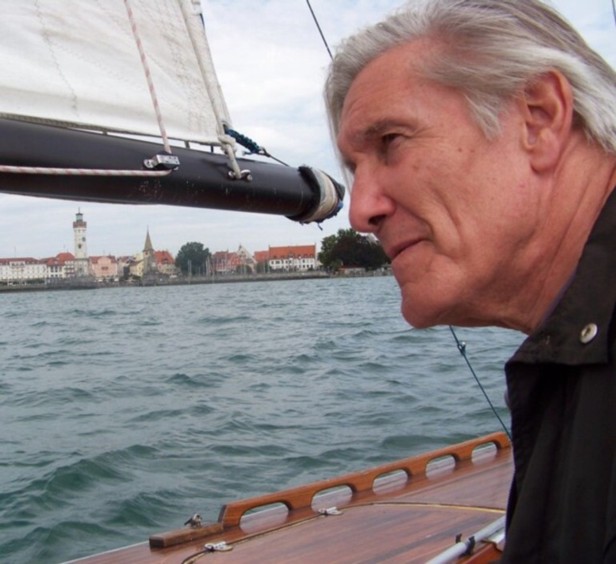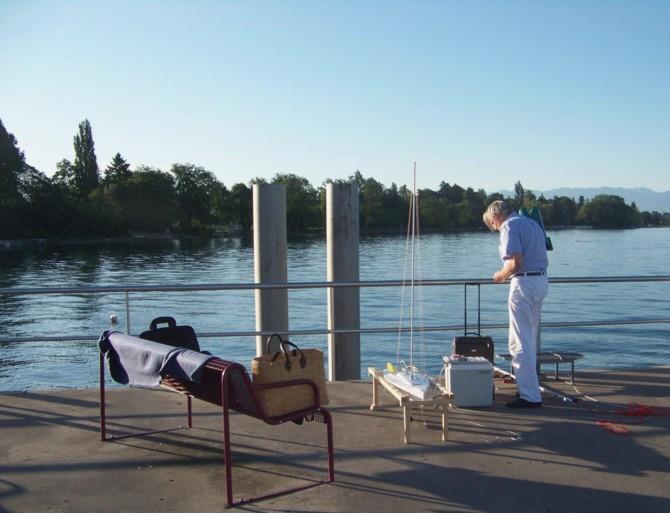 Yachtresearch
Yachtresearch
A
sailor like me wants a yacht for fast voyages. I use the computer in my
research for the optimum design. Only the computer can give me a fast
ranking of different variants. With the right search strategy the
computer can also cover parameter ranges that might otherwise be
overlooked by the designer.
One of the tasks in optimization is the creation of a lines plan for the hull, based on the optimization parameters. The program UliLines was written for this purpose and can be downloaded at UliLines.
In April 2011 the Yacht Research Unit Kiel allowed me to use their circulating water channel for the determination of the different resistance parts of hull and appendages. Unfortunately it turned out, that a CWC cannot compete with a traditional towing tank, the accuracy and repeatability of the results is not sufficient (report in German).
A numerical method that
is successfully applied in yacht design are the
genetic algorithms. The computer is used to improve a design in an
evolutionary process through many generations. I presented first
results
of
this method at the Second High Performance Yacht
Design Conference
2006 in Auckland. The figure of merit was the VMG and the constraint
were the costs of the yacht. The validity of the optimum depends
heavily on
the accuracy of the predicted speed potential of the yacht. The speed
must be calculated from the geometries of hull and sails. The
resistance of the hull could be predicted at that time only on the
basis of the regression factors, which were developed at
the TU Delft. All influences on driving- and resistance-forces are
still not known though. Of great help were the towing tank test
data of a Dehler 33. They were thankfully supplied by the SVA
Potsdam. The status of this work as of 2012 is described here.
In the years to follow,
a
lot of new tank test data became available. Since the beginning of 2013
all individual test
results from the towing tank at the TU Delft
are available on their website. This is a new
invaluable knowledge base. Based on this experimental data and an
additional boundary-layer calculation, I developed a
new correlation for the residual
resistance. A prerequisite
for this task is explained here, the theoretical background
and the results of the regression analysis can be found in this report.
The database was increased by adding the towing tank
results for the Delft-372 model. UliTank is a
computer program that incorporates all the newest findings. In 2015 the
Sailing
Yacht Research Foundation
published
on their website towing tank results that were conducted in
2003. I used these results to increase the database of the regression
analysis for the new version UliTank_3.3.This new version
computes the resistance with appendages in the heeled
attitude and with leeway. UliTank_3.3 can be
downloaded here.
The
next step was a more accurate modeling of the sail forces. For this
purpose I have developed the program UliSail. It is here
available. A combination of UliTank
and
UliSail enabled the development of a velocity prediction program (VPP).
The big difference to conventional VPPs is the numerical modeling. You
can download it here.
One of the tasks in optimization is the creation of a lines plan for the hull, based on the optimization parameters. The program UliLines was written for this purpose and can be downloaded at UliLines.
In April 2011 the Yacht Research Unit Kiel allowed me to use their circulating water channel for the determination of the different resistance parts of hull and appendages. Unfortunately it turned out, that a CWC cannot compete with a traditional towing tank, the accuracy and repeatability of the results is not sufficient (report in German).

To define the
constraints for the optimization it became necessary, to estimate the
weight of
the yacht for a given design. The structural weight can be calculated
from the
scantling rules of the classification society, but there was a gap if
it comes to the design load for the keel-hull junction. To get reliable
data for this design task, I conducted drop tests with a
model-yacht in the summer of 2009. The results were published
in the RINA
transactions
2011 and are
available as pdf-file.
These results show, that for yachts with a low ballast
ratio conventional scantlings might result in a structural
design
that is too week.
E-mails will reach me at "ulrich[a]remmlinger.com"
last update of website: July 2024
Preparation
of drop tests at lake constance